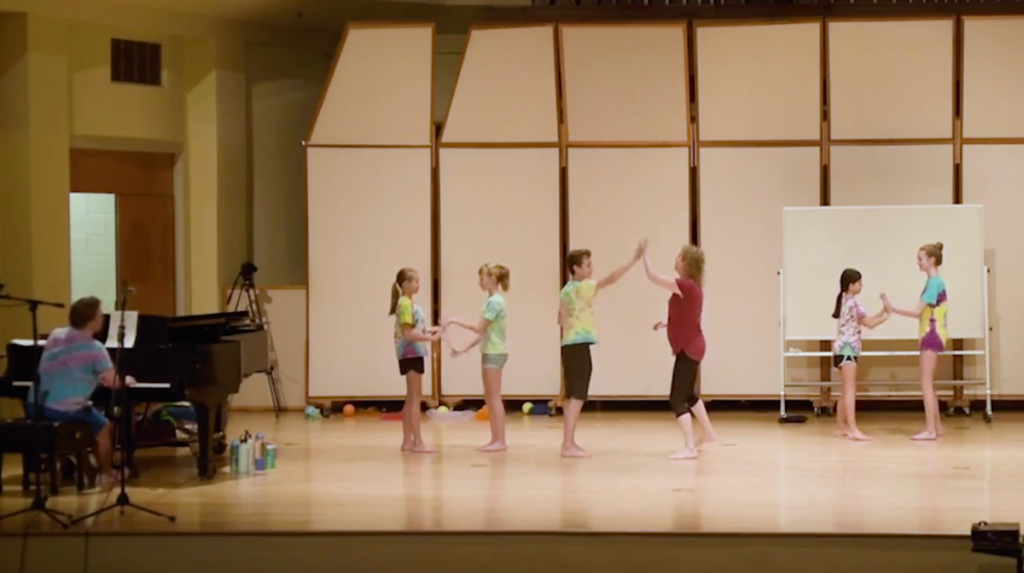
Lesson Study Guide: Oh, the Places You Will Go!
This demonstration class was done with students ages 11-13 from the Rhythmic-Solfège IV and Advanced Dalcroze I classes at the Dalcroze School of the Rockies, where they have studied for 7-9 years or more.
One of the thing’s that’s remarkable about this method is that it can work in marvelous ways when you first say “hello.” From the first introduction to Dalcroze, there’s something magical about these kinds of classes.
But then, what do you say the next year when you’ve already said “hello?” What happens then? And what happens in the third year? And in the fourth year? And the fifth, sixth, seventh, eighth, and ninth year of training? What can that look like?
That’s what we’re here to show you a little bit of—what happens after that.
These students have all completed two years of Eurhythmics classes (beginning at age 5 or 6), then they started into the Rhythmic-Solfège sequence at our school. Some students are now in Advance Dalcroze I, which is part of a three-year sequence that eventually leads to taking the AP Music Theory exam.
As a companion to this Study Guide, a video of this lesson is available on the DSA Website under “Videos.”
Discovery of Theme, Augmentation, & Diminution
Be with a friend. Find a way to show the rhythm I play. Use your whole body! You can tap, you can clap, you can design, you can dance…but get creative…show me something I’ve never seen before!
- If my music changes, say good-bye and move the patterns you hear.
- Sing the rhythm colors as you move!
- Short–Short–Long (Anapest)
- (Purple Red)
- (Forest Green)
- (Red Red Blue)
- Write these patterns on the board; discover the relationships between the patterns.
Polyrhythms of Theme, Augmentation, & Diminution
Step the inverse of the pattern on the board. Clap what you step. I’ll call changes to the pattern in either the hands or the feet. Sometimes the feet step one pattern while the hands clap another.
- Step and clap the theme: (Red Purple)
- At “HANDS HOP,” then your hands tap the augmentation: (Blue Red Red)
- At “HANDS HIP,” then your hands tap the diminution: (Bright Orange)
- At “HANDS RETURN,” then your hands tap the theme again: (Red Purple)
- At “FEET HIP,” then your hands tap the diminution: (Bright Orange)
- At “FEET HOP,” then your hands tap the augmentation: (Blue Red Red)
At “FEET RETURN,” then your hands tap the theme again: (Red Purple)
– Continued –
 Download the Full Study Guide
View the Enhanced Video Lesson
Download the Full Study Guide
View the Enhanced Video Lesson
Members of the Dalcroze Society of America can read and download this full study guide online. Not a member? Join instantly online.